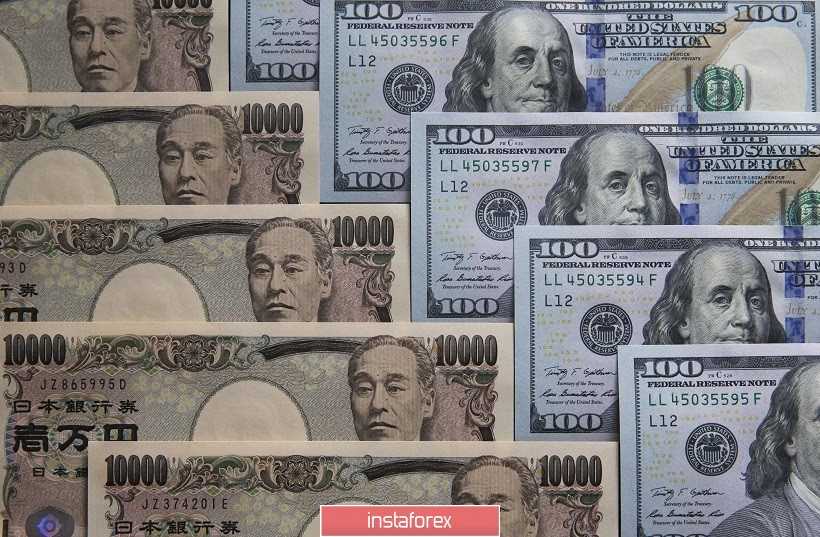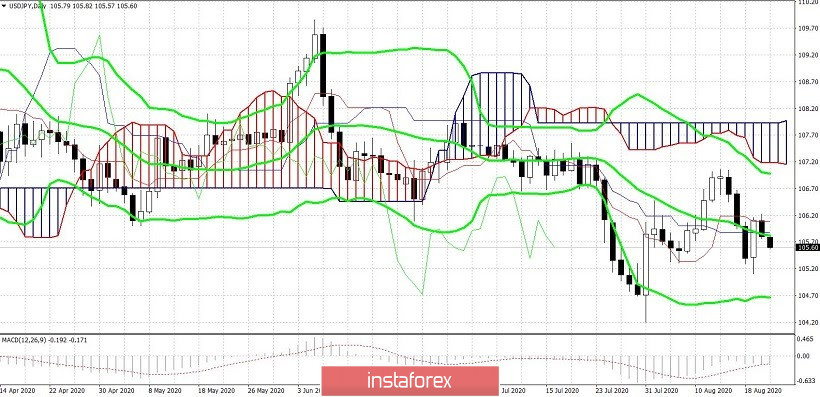The yen was expected to ignore data on the growth of Japanese inflation, which was published during the Asian session on Friday. The release was controversial – most of the components were released in the red zone, falling short of the forecast values. But the Japanese currency barely moved in response, and even strengthened its position against the dollar, gaining a foothold within the 105th figure. All this once again suggests that the yen is now focused primarily on the external fundamental background, following the US currency. At the same time, internal statistics play a secondary role, which, however, traders should not ignore.
The release was really quite contradictory: the overall consumer price index was not at the level of forecasts, that is, it rose to 0.3% in July. This indicator was released at the 0.1% level over the past three months. Therefore, we see some positive dynamics here, although inflation still remains at an extremely low level. Core indexes were completely disappointed. For example, the consumer price index excluding prices for fresh food remained at zero, although analysts expected to see a low growth to 0.1%. This indicator has been in the range of -0.2% -0% since April. The consumer price index excluding food and energy prices also fell short of the forecast values, remaining at 0.4% (with growth forecast to 0.5%).

It is worth recalling that the inflation indicators in particular and the economy as a whole began to cause alarm at the end of last year, that is, even before the coronavirus crisis. Part of the economic downturn was due to tax policy. After the sales tax was raised in Japan, consumer spending immediately collapsed by three percent. Business investment also significantly declined. Similarly, exports showed weak dynamics. The coronavirus factor joined all the economic problems at the beginning of this year.
Japanese PMI indexes were also published today. In the production sector, this indicator showed positive dynamics (instead of the projected growth to 45 points, it rose to 46.6 points), but at the same time it fell short of the key 50-point mark, which would indicate an improvement in the situation in this sector of the economy. Meanwhile, the situation remains difficult in the service sector – the coronavirus crisis continues to leave its fingerprints. Here, the indicator lost its position, falling to 45 points (the index has been below the 50-point mark since February of this year).
The next meeting of the Bank of Japan will take place in mid-September, so traders were calm about the mentioned releases. Nevertheless, representatives of the Japanese central bank may react negatively to today's release in their speeches, allowing further easing of monetary policy and even a decrease in interest rates. BOJ Governor Haruhiko Kuroda has repeatedly said that the central bank will act "without hesitation" if the situation worsens.
But today, USD/JPY traders are focused on other fundamental factors. The dollar index did not hold the positions it won yesterday and began to slide down again, to the middle of the 92nd figure. The ongoing political conflict between Democrats and the White House, mixed signals about the prospects for US-China relations and negative macroeconomic reports have crippled the position of dollar bulls.
Let me remind you that representatives of the Democratic party flatly refused to support the "reduced" bill on providing assistance to the American economy. They are pushing for a full-fledged $2 trillion bill. US President Donald Trump just as categorically refused to compromise with the Democrats, insisting on his version of the document (where the spending part is half as much). As a result, the parties again went to the corners of the ring until September, when the congressmen will return from the summer vacation.
As for the prospects of US-Chinese relations, the situation is also ambiguous. On the one hand, many information sources say that consultations between the US and China are underway, and the parties are preparing for full-fledged negotiations. On the other hand, Trump and other White House officials have recently stepped up anti-Chinese rhetoric, amid a severe coronavirus crisis. Therefore, many experts have come to the conclusion that there will be no warming between the countries until November, that is, before the US presidential election. Trump will continue to take an "anti-Chinese position". At least for political reasons – Joe Biden is still ahead of him in the ratings, although not as confident as at the beginning of the summer.
Macroeconomic reports, which were published yesterday, became the icing on the cake. First of all, we are talking about the increase in the number of initial applications for unemployment benefits. Let me remind you that this indicator has been steadily declining for 11 weeks, reflecting the recovery of the US labor market. But then weekly indicators began to show contradictory dynamics, exceeding the forecast values. It happened this time too. According to forecasts, the number of initial applications should have increased by 930,000. But in reality, the indicator jumped by 1,106,000. In addition, the Philadelphia Fed Manufacturing Index was released on Thursday. It was also in the red zone. Economists recorded a slowdown in the indicator to 17 points from the previous value of 21 points.

Such a fundamental background put pressure on the dollar, after which it weakened throughout the market. The USD/JPY pair is no exception here. Buyers could not overcome the resistance level of 106.05 (Tenkan-sen line on the daily chart), so that the Ichimoku indicator could form the Golden Cross signal. Now the bears have taken over the initiative. The first target of the downward movement is the psychologically important level of 105.00. Major support is at 104.60, which is the bottom line of the Bollinger Bands indicator on the daily chart.





















